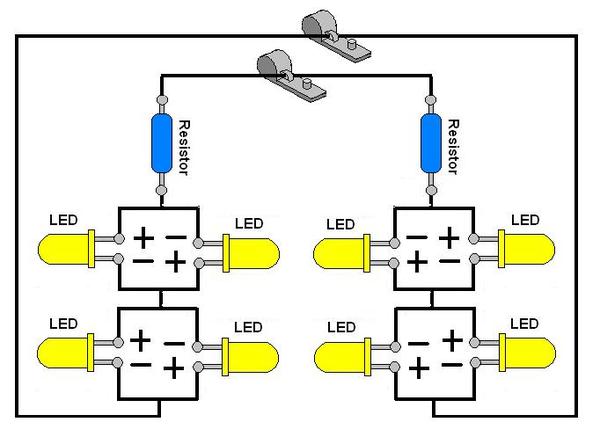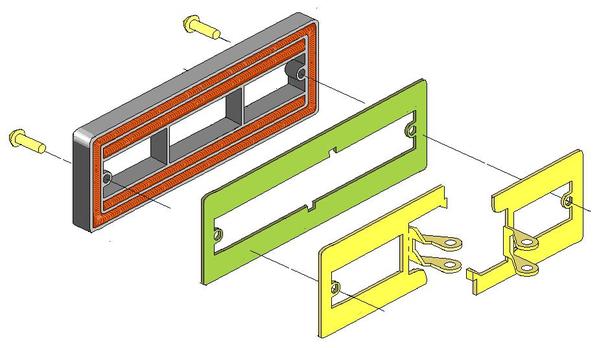My newest electrical project is to convert two Lionel 195 Flood Light Towers from incandescent bulbs to LEDs. I took apart the light assembly that sits on top of the tower to find out what kind of circuit the bulbs are in. I found what I believe to be a strange parallel circuit. Arrows indicate current flow as I see it. The sketch on the right is the gray 195 Floodlight Tower made while Lionel was in New York.
My thought is to put a bridge rectifier and a single resistor on the bottom side of the base and plug 5mm white LEDs into the head as if they were bulbs.
The orange color in the sketch of the head are the coil spring conductors, a poor design that has likely caused the early demise of many of the pricey pin-base incandescent bulbs.
The later model 195 tower (red & black) is a much improved design that uses a Christmas light type bulb and a conventional set of metal conductors. See the sketches in the posts below.
















